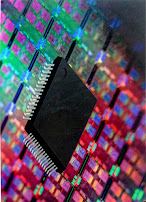Salient Features of 8086 Microprocessor
Salient Features of 8086 Microprocessor The microprocessor 8086 was developed by Intel in 1978 with the following features : 1. Single +5V power supply. 2. Clock speed range of 5-10 Mhz. 3. Capable of executing about 0.33 MIPS (million instructions per second). 4. A 16 bit processor which means that its arithmetic logic unit, internal registers and most of the instructions are designed to work with 16 bit binary words. 5. A 20 bit address bus and hence can directly address 220 (1 M byte) memory locations. 6. It supports pipelined architecture and has two parellel processors, i.e. the Bus interface unit and the Execution unit. 7. It works in two modes; the minimum mode where 8086 is the only processor in the microprocessor based system and maximum mode, where more than one processors share the buses. #msbte #engineering #electronics engineering #computer engineering #8086 microprocessors notes #electrical engineering #notes #basics of 8086 microprocessor #basics of
